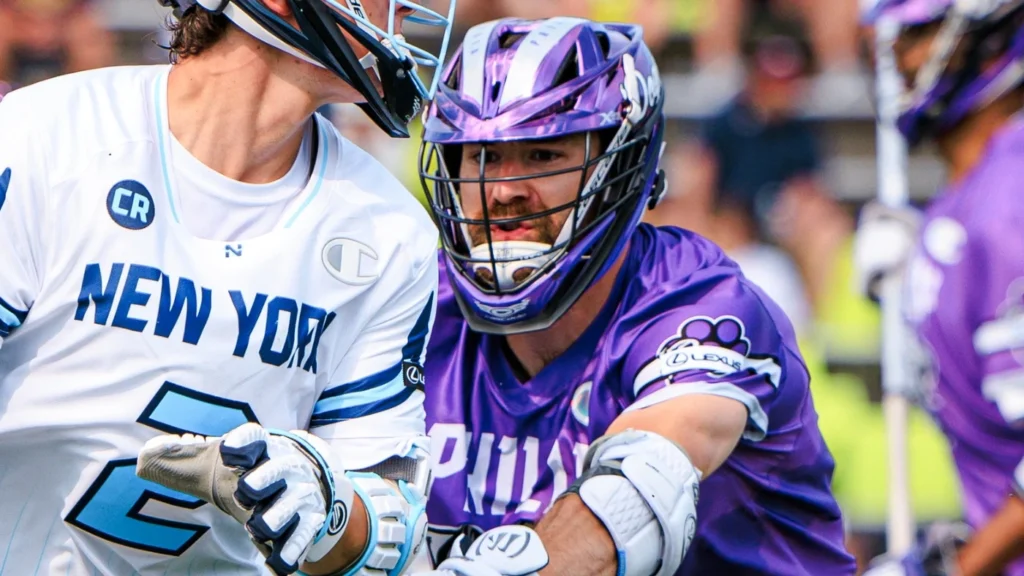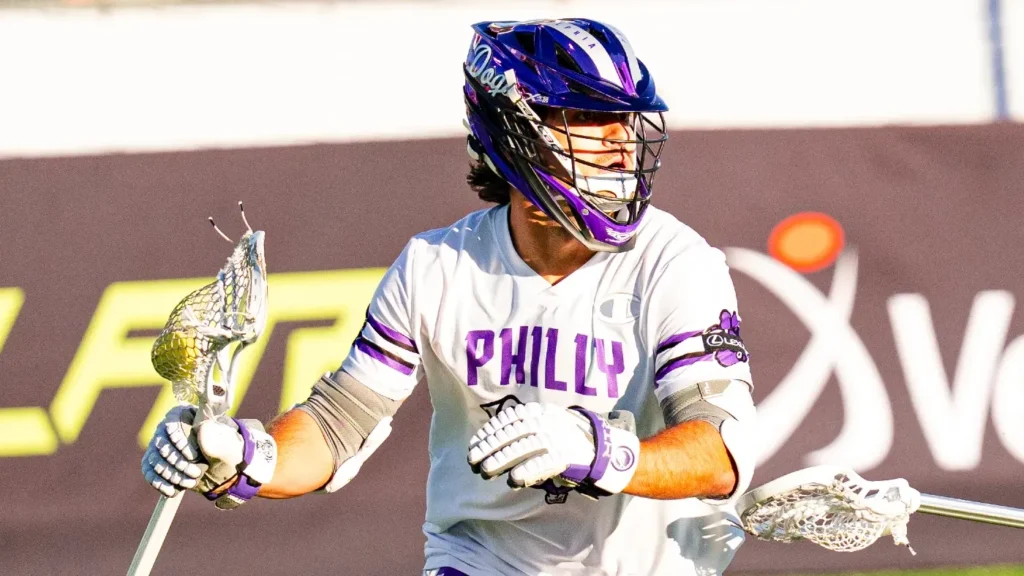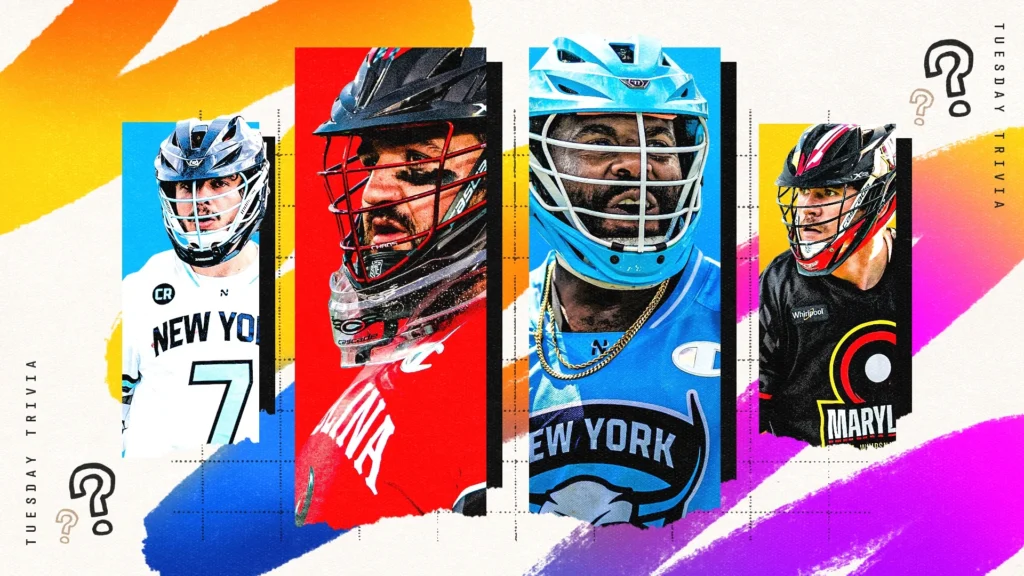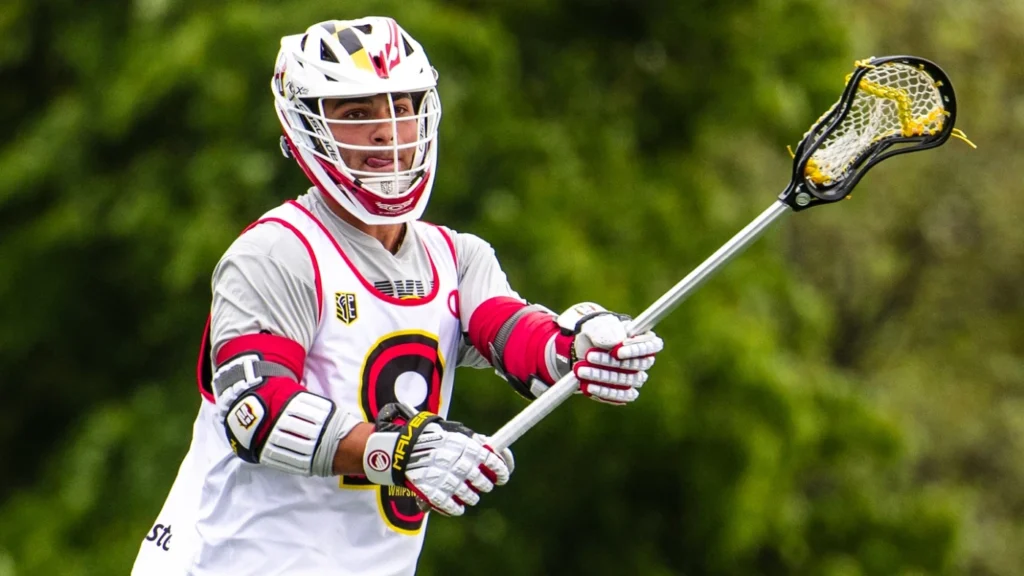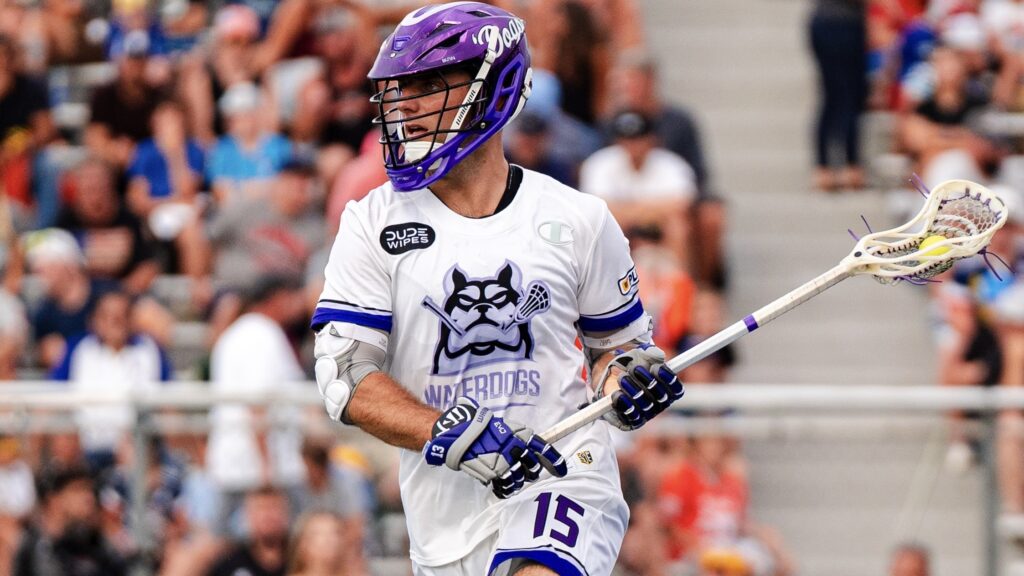
How the Waterdogs can take advantage of the 13-yard arc
By Wyatt Miller | Feb 11, 2024
Two yards is a lot. Imagine Ryan Conrad lying down perpendicular to the cage, with his head at the top of the arc – his feet would mark the top of the Championship Series’ 2-point line. That significantly changes how teams treat 2-point shooting.
In the inaugural Championship Series, every winning team produced a higher two-point percentage than their opponent. On average, clean saves led to a more efficient ensuing possession, and 13-yard shots result in clean saves twice as often as shots from inside 13. In last year’s tournament, the possession after a clean save averaged an offensive efficiency of 44.1%, while possessions after a messy save averaged 38.1%.
The Philadelphia Waterdogs shot 50 twos this past season, the least of any Championship Series team. Yet, they had the second-highest two-point percentage in the league (24.5%), and hit the third-most twos (12). To prevail in the fast pace of sixes, they need to sustain that high efficiency over a larger volume.
“You only get one shot per possession so you really can’t miss the cage. You want to be as efficient as possible,” said head coach and general manager Andy Copelan. “The two-point arc being 13 yards instead of 15 yards is a real element that all four teams are going to prepare for.”
Copelan also said the offense will have a similar flow to the summer, and he won’t ask anyone to play outside of themselves. Thus, the Waterdogs will be looking to adapt some of their successful field schemes to get open looks from 2 with their Champ Series personnel. Here’s how they can pull it off:
Translating the two-man game
No team in the PLL initiated more goals off the two-man game (42) than the Waterdogs last season. That concept is transferable to the sixes field in a number of ways. Copelan mentioned that Atlas did “a lot of good things” last season offensively, and he’s studied their film to try and replicate some of that success with the Waterdogs’ personnel.
In the fourth quarter of the Champ Series’ first-ever game, Chris Gray followed his pass to the right, setting a front pick to give Marc O’Rourke room to work to his left. On the opposite side, Romar Dennis set an off-ball screen, the switch was late, and Jake Carraway’s catch-and-shoot from straight ahead slotted into the top left corner. This play illustrates the power of picks with only short sticks defending, and how different kinds of screens can work in tandem.
Romar pin down screen for a 2-pointer. I counted four (4!!!) pick assists for Romar. Nobody wants to help from him above or near the arc. pic.twitter.com/E44mz1FaX3
— Joe Keegan (@joekeegs) February 23, 2023
When in doubt, set a screen. Atlas used on and off-ball picks constantly to free up space from the top-down. O’Rourke could have shot after clearing his screen, but chose to feed Carraway with a better angle. The slightest separation presents a shooting opportunity, and screens are the fastest way to provide that. Once the hands are free, it’s just a matter of execution.
“We’ve got guys who can sling it from deep, and we’ve got guys that can move the ball very well with each other,” Carraway said. “We built a lot of chemistry throughout the summer, which I think will naturally translate into sixes.”
The Waterdogs are a pick-heavy offense and will continue to be so. Even the Dogs’ defenders have “offensive acumen'' in their game, Copelan said. Christian Scarpello, Jake Higgins and Charlie Hayes excelled at setting screens in transition, and they all scored at least two points in 2023. The Waterdogs have the right personnel for a fluid sixes offense, and if Copelan wants to stick to the team’s strengths, picks will be plentiful.
Michael Sowers at X
During last year's tournament, Rob Pannell tweeted, “I would go behind the cage all the time in Sixes.” He and Michael Sowers are two of the best X attackmen in the world, yet they utilize the space differently. They’ll both be on the sixes field in mid-February.
Sowers’ explosive playmaking means he can never be unmarked, which opens up plenty of deep-ball opportunities for the Dogs. His presence inside is an essential part of the Waterdogs’ offense, and it will only be more impactful with fewer people on the field.
Early in the championship game last September, Sowers attacked the cage from the left GLE. Then, Carraway put his shoulder into Graeme Hossack, forcing a short stick onto Sowers. From X, he reset, but Hossack stayed close on the wing while Carraway backed up beyond the arc. Seeing that, Sowers split-dodged to his right, forcing Hossack to help, which left Carraway wide open. He sniped the top left corner from just inside the 2-point line before help could come.
Short sticks on Sowers are a no-no. The quickest feet in the league will take advantage every time. Because of that, Hossack stayed low and Sowers recognized the open man. Sowers recognized the switch immediately, backed up to X and then attacked that same side to set up the deep shot, showcasing his elite IQ.
In sixes, everyone has a short stick. Teams can’t play help defense on Sowers and defend the 2-point line simultaneously. That means the speedster will get some 1-on-1 matchups against short sticks from X, which is a rarity during the summer. And when help does come, shooters will be open.
“Anyone guarding him with a short stick, I don’t care where he’s dodging from, it’s going to be difficult,” Kieran McArdle said of Sowers. “I can definitely say I’m happy he’s on my team.”
Let the shooters shoot
2-point efficiency is uniquely significant in sixes, and three Waterdogs are top-seven in shot percentage from 13+ yards since 2019 (among Champ Series players with at least 10 attempts). Carraway, McArdle and Conrad have all shot over 19% from that distance and will likely have 2-point success in the Champ Series.
Last year, Carraway made six 2-pointers on 11 attempts, all with a pulled groin. A fresh bill of health along with the advantage of experience puts him among the top deep threats in this tournament. In his pro career, he’s shot 12-for-57 (21.1%) from 13+ yards in the summers, ranking fifth among qualified Champ Series players.
“Our whole thought process was just to hammer the 2,” Carraway said of Atlas last season. “So we had a bunch of guys that could sling it from outside and I think we do on this team as well. 13 yards is short. That is very short. I think a lot of guys in the league have that distance. The 2-pointer is huge for sixes, to capitalize on that early and often.”
Meanwhile, Conrad ranks second on 4-of-16 shooting (25%), and McArdle has hit 8-of-42 (19.1%). All three players have shown an affinity for efficiency off the dodge. That’s how volume shooters like Dennis made an impact from deep last season, and these guys have that potential.
“If I get my hands free, I think I’ll pull it from there,” McArdle said of the 13-yard arc. “15 yards is a little too deep for me, but 13, I might be able to sneak a few in there.”

